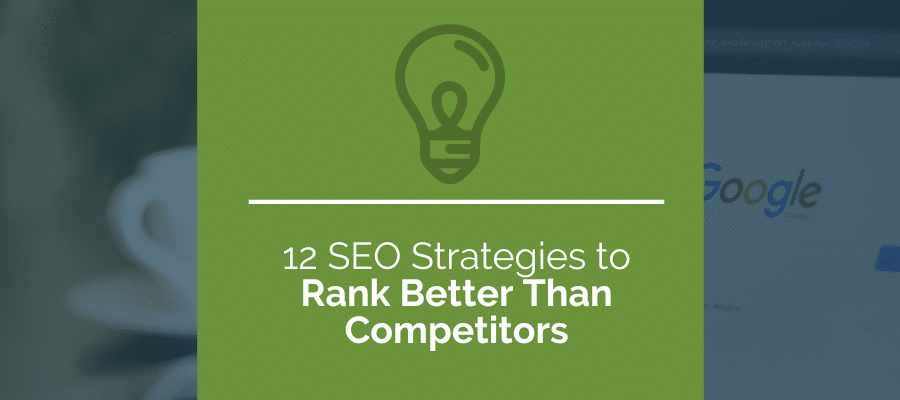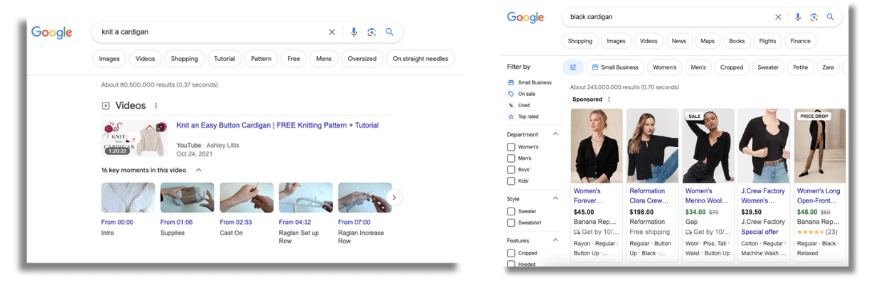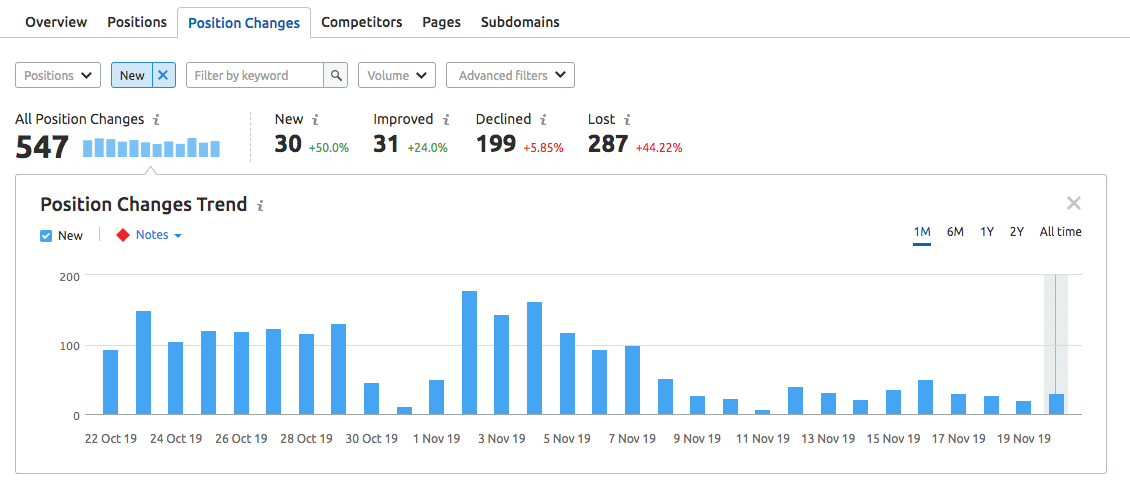
When potential customers enter a search and your website appears high in the search results, you’re more likely to get traffic, clicks, and sales. But winning top spots in search results means outranking your competitors. As more and more people use search engines in their buying decisions, more businesses are entering the digital fray, making competition tougher. The right SEO strategies can give you an edge and help you rank better than competitors on Google and other search engines.
What Does Google Look For When It Ranks Content?
Before we look at the SEO strategies to rank better than competitors on Google, it’s helpful to understand how Google ranks content. This process isn’t random, and in fact involves a complex algorithm to determine how content should be ranked in a list of search results. While the exact details of the algorithm are proprietary and not fully disclosed, Google has provided general guidelines and factors that influence search rankings. Understanding these factors can show why and how SEO strategies work to outrank competitors, which we’ll discuss in more detail later in the blog post.
1. Relevance to the Search Query
Google aims to provide users with the most relevant results for their search queries. Content that closely matches the user’s search intent is more likely to rank higher. As Google’s algorithm has evolved, the search engine has better tools to understand a user’s search query. For example, the search engine will show shopping-related results when a user enters a query like “black cardigan,” and instructional results for a query like “knit a cardigan.”

Google’s search engine has the tools to understand a user’s search intent, and provide appropriate results.
2. Content Quality
Google provides a service to its users; organizing content online, and providing the best possible content when a user enters a search. To remain a leading search engine, it has to provide search results that answer a user’s query accurately and thoroughly. That means, Google looks for high-quality content to rank. Google assesses the depth, accuracy, and comprehensiveness of content. Well-researched, informative, and engaging content tends to perform better.
3. Keyword Usage
Google analyzes how well a page matches the keywords used in a search query. It’s important to use keywords naturally in titles, headers, and throughout the content. However, keyword stuffing—excessive use of keywords—should be avoided. As better tools have evolved to understand what a web page is about and what a user is looking for, matching keywords verbatim to a user’s query is less important than content quality. However, an absence or relevant terms will make it more difficult for Google’s algorithm to understand what the content is focused on.
4. User Experience (UX)
Google looks for websites that provide an enjoyable user experience. Google considers factors related to user experience, such as page loading speed, mobile-friendliness, and overall site usability. Websites that provide a positive experience are favored in rankings.
5. Backlinks
The quantity and quality of backlinks—links from other websites to yours—are crucial. Google views backlinks as votes of confidence in your content. High-quality, authoritative backlinks contribute to higher rankings.
6. Mobile-Friendly Design
Increasingly, users are visiting websites on their mobile devices. With mobile-first indexing, Google gives preference to websites that are optimized for mobile devices. A responsive design that adapts to different screen sizes is essential for ranking well.
7. Dwell Time and Bounce Rate
Dwell time—the time a user spends on a page—and bounce rate—the percentage of users who leave a page without interacting—also factor into how Google ranks content. Higher dwell time and lower bounce rates suggest that users find the content valuable.
8. Content Freshness
Google often values fresh content. Regularly updating content or adding new information can positively impact rankings, especially for topics that evolve over time.
9. Structured Data and Schema Markup
The use of structured data and schema markup helps search engines understand the context of your content. This can result in rich snippets and enhanced listings in search results.
10. Social Signals
While not a direct ranking factor, social signals (engagement on social media platforms) can indirectly influence rankings. Popular content on social media may attract more backlinks and organic traffic.
11. Security (HTTPS)
Secure websites with HTTPS encryption are preferred by Google. It provides a safer environment for users, and Google may give a slight ranking boost to secure sites.
12. Page Authority
Google assesses the authority of a page based on a variety of factors, including the overall authority of the domain, the number and quality of backlinks, and the relevance of the content.
Keep in mind that Google’s algorithm is continually evolving, and staying informed about updates and best practices is essential for maintaining and improving search rankings.
12 Strategies to Rank Better Than Competitors
With a better understanding of how Google decides to rank content in search engine results pages (SERPs), let’s take a look at some strategies to outrank competitors, and help users find your content first.
1. Keyword Research

SEMrush and similar tools can show you where you rank for particular search queries, and also how your rank changes over time.
Conduct thorough keyword research with keyword tools, like those listed below. Identify not only high-volume keywords but also long-tail keywords that are more specific to your niche. Long-tail keywords generally generate less traffic, but also less competition, which can help your content appear higher in a search.
A variety of free and inexpensive tools can give you keyword data. Try these:
- Google Keyword Planner: Unless you buy Google ads, this tool will give you rough estimates, but it’s a good place to start.
- SEMrush’s Keyword Magic Tool: You’ll need an SEMrush subscription for this, but you’ll get in-depth keyword data.
- Ahrefs Keyword Explorer: similar to SEMrush’s tools, Ahrefs gives you detailed search volume and historic data about a wide range of keywords, for a price.
- Soovle: Soovle uses data from a number of different sites to find what users are searching for.
- Jaaxy: Jaaxy gives you unique keywords and other helpful data for choosing the right one.
Though verbatim keywords aren’t necessary to appear in a relevant search, the right keywords can signal which topics your potential customers are interested in. This can help you avoid producing content that’s unlikely to get your customers’ attention.
2. Create High-Quality Content
High-quality content is not just about meeting word count; it’s about providing value. Understand your audience’s needs and address them in a comprehensive manner. A mix of content, including images and videos, can help to create engaging content that encourages users to spend more time on your page.
3. Optimize On-Page Elements
Craft compelling and concise title tags that accurately reflect the content of your page. Write meta descriptions that encourage clicks by summarizing the page’s content. Use headers (H1, H2, etc.) to structure your content logically and incorporate keywords where relevant.
4. Mobile Optimization
Ensure your website is responsive and adapts to various screen sizes. Test your site’s mobile responsiveness using tools like Google’s Mobile-Friendly Test.
5. Page Loading Speed
Optimize images, leverage browser caching, and utilize content delivery networks (CDNs) to enhance your website’s loading speed. Tools like Google PageSpeed Insights can provide insights and suggestions for improvement.
6. Backlink Building
Develop a backlink strategy by creating shareable and link-worthy content. Reach out to industry influencers, partners, and other websites for collaboration. Guest posting on reputable sites can also help build backlinks.
7. Social Media Promotion
Share your content across relevant social media platforms. Craft engaging captions and use eye-catching visuals to encourage social sharing. Social signals, such as likes and shares, indirectly impact search rankings. Generating traffic from social media can help your organic ranking on a SERP.
8. User Experience (UX)
Prioritize a clean and intuitive design. Ensure easy navigation and a clear user journey. Optimize your website’s layout and structure to minimize bounce rates and increase time spent on your pages.
9. Local SEO
Local SEO optimization is especially important for brick-and-mortar stores. Optimize your Google My Business profile with accurate business information, including your address, phone number, and business hours. Encourage satisfied customers to leave reviews. Consistent NAP (Name, Address, Phone Number) information across directories is crucial.
10. Regularly Update Content
Periodically review and update existing content to keep it relevant. Add new information, statistics, or insights. Consistently create new content to showcase your expertise and remain competitive in search results.
11. Use Schema Markup
Implement schema markup to provide search engines with additional context about your content. This can result in rich snippets that enhance your listing in search results, potentially increasing click-through rates.
12. Monitor Analytics
Use tools like Google Analytics to track the performance of your content. Analyze user behavior, including bounce rates and time on page. Identify top-performing pages and understand how users find and interact with your content.
These strategies can help your content rank higher than your competitors. Implementing these strategies can seem overwhelming at first, but keep in mind that you don’t have to implement all of these strategies at once.
Why Is Ranking Important?
You probably already have reasons in mind for improving your content to outrank competitors. However, there may be other reasons to improve your content that you might not have thought of. Let’s take a look at a few of the reasons why it’s helpful and important for your content to rank higher than your competitors’.
1. Increased Visibility
The higher your content ranks in search results, the more visible it becomes to users. Most people click on one of the first few results on the search engine results page (SERP). Ranking above competitors increases the likelihood of users discovering and clicking on your content.
2. Higher Click-Through Rates (CTR)
Content that ranks higher tends to attract higher click-through rates (CTR). Users often associate higher rankings with credibility and relevance, making them more likely to click on the top results.
3. Brand Authority and Trust
Higher search rankings contribute to the perception of authority and trustworthiness. Users often trust websites that appear at the top of search results, and consistent top rankings can enhance your brand’s credibility in your industry.
4. Competitive Advantage
Outranking your competitors means gaining a competitive advantage in your market. Users are more likely to choose your products or services over competitors’ if they consistently find your content at the top of search results.
5. Increased Organic Traffic
Higher rankings lead to increased organic traffic. Organic traffic, generated through non-paid search results, is often more targeted and likely to convert into leads or sales.
6. Cost-Effectiveness
Organic search traffic is cost-effective compared to paid advertising. While paid strategies can be effective, ranking organically above competitors ensures sustained visibility without ongoing advertising costs.
7. Better User Experience
Users are more likely to have a positive experience if they find relevant and high-quality content quickly. Higher rankings contribute to a better overall user experience, leading to increased satisfaction and loyalty.
8. Impact on Conversion Rates
Well-optimized and high-ranking content can positively impact conversion rates. Users who find what they’re looking for easily are more likely to take desired actions, whether it’s making a purchase, filling out a form, or engaging with your content.
9. Market Share Growth
Securing top positions in search results allows you to capture a larger share of the market. It positions your brand as a leader, attracting more customers and contributing to overall market share growth.
10. Adaptability to Algorithm Changes
Search engine algorithms are dynamic and change quickly. Maintaining higher rankings demonstrates adaptability to algorithm updates and reflects your commitment to providing valuable and relevant content.
Ranking above your competitors in search results is not just about visibility; it’s about establishing authority, trust, and a competitive edge in your industry. It’s a long-term investment in building your online presence and attracting a targeted audience that is more likely to convert into customers or clients. By implementing these strategies, you create a comprehensive SEO plan that addresses various aspects of online visibility. Regular monitoring, analysis, and adjustments based on performance data are key to ongoing success in improving your content’s rankings compared to your competitors.
